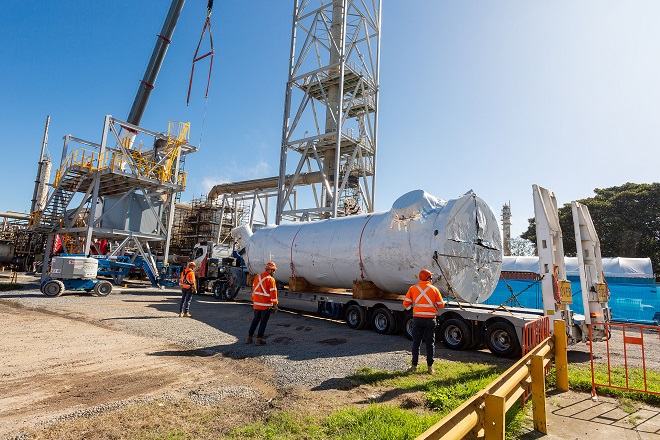Share this article
What is the Safeguard Mechanism
The Australian government’s Safeguard Mechanism mandates that the country’s biggest greenhouse gas emitters must keep their net direct (scope 1) emissions below a prescribed limit, which is also known as a baseline.
The Safeguard Mechanism complements the governments Emissions Reduction Fund (ERF) program and is legislated under the National Greenhouse and Energy Reporting Act of 2007. The Safeguard Mechanism is managed by the Clean Energy Regulator.
What is the benefit of the Safeguard Mechanism legislation?
The Safeguard Mechanism is designed to ensure the largest emitters in the country are taking action to reduce their emissions. Without this policy, are currently few other mechanisms in place to limit the emissions of Australia’s largest emitters or to hold them accountable for their emissions. The policy also encourages emissions reductions through a market-based approach that allows emitters to trade emissions permits, providing an incentive for the most cost-effective emissions reduction options to be pursued.
The revised 2023 Safeguard Mechanism is a significant improvement on how the scheme functioned in the past to accelerate decarbonisation and will be a necessary policy lever to help Australia achieve its emissions reductions of 43% (below 2005 levels) by 2030.
What facilities are covered by the Safeguard Mechanism and what is the Safeguard threshold?
The Safeguard Mechanism covers large industrial facilities with annual scope 1 emissions over 100,000 tonnes of CO2e. There are just over 215 facilities, totalling over 135 Mt.
Safeguard facilities typically include large industrial operations such as:
- Manufacturing: Steel, aluminum, cement, and chemical production facilities.
- Mining: Coal mines and other mineral extraction sites.
- Oil and Gas: Onshore and offshore oil and gas extraction and processing facilities.
- Transport: Major transport facilities like airports and large freight terminals.
- Electricity Generation: Power stations and other large-scale energy producers.
What are Safeguard baselines and what happens if they are breached?
Each facility has a baseline calculated in line with the Safeguard Mechanism rule – which takes into account the facility’s previous emissions and the industry average for the products they make.
This Baseline establishes a cap on the total net emissions for the Facility for the reporting year.
Responsible emitters are required to relinquish Australian Carbon Credit Units (ACCUs), or Safeguard Mechanism Credits (SMCs) for additional emissions above the cap. Conversely, SMC’s may be issued where a facility sits below its cap, incentivising further emissions reductions.
Where do the emissions reductions come from with the Safeguard Mechanism policy?
Importantly, the emissions reductions targeted by the Safeguard Mechanism arise from improvements in emissions intensity, not absolute emissions. Savings may come from various sources that vary significantly in terms of cost, risk and timing. Opportunities include:
- Fuel switching from coal/gas to renewable energy sources including green hydrogen, biogas and increasingly, industrial heat pumps.
- Utilising catalysts or conducting process optimisation to abate industrial emissions
- Implementing efficiency measures to reduce energy consumption and emissions from industrial processes.
- Implementing carbon capture and storage technologies.
- Adopting measures to improve waste management and reduce methane emissions from landfills.
In hard to abate sectors, there may not be feasible decarbonisation options available. In these cases, emitters may need to partner with other emitters with excess SMCs or seek to generate nature-based ACCUs through the ERF. Careful analysis is required to identify the best opportunity but experts are available to help.

Image: Orica industrial scale abatement project at Kooragang Island NSW.
The Emissions Reduction Fund (ERF) is now the Australian Carbon Credit Unit (ACCU) Scheme
The Emissions Reduction Fund was introduced in 2014 and was administered by the Clean Energy Regulator. The ERF was designed to incentivise emissions reductions by enabling emitters to monetise abatement opportunities where there is an available ERF method.
In 2023 with the Safeguard Mechanism Reforms, the ERF was sunsetted into the Australian Carbon Credit Unit (ACCU) Scheme.
Broadly, there are two key means to create ACCUs. They can be created through carbon abatement (for example, avoiding industrial emissions) or carbon sequestration (for example, planting trees). Both approaches have different trade-offs and should be explored carefully by prospective proponents.
What are Safeguard Mechanism Credits?
Facilities covered by the Safeguard Mechanism that reduce their emissions below their baselines can earn Safeguard Mechanism Credits (SMCs). The number of SMCs earned depends on the total amount of emissions reduced. SMCs can be traded between facilities through the Clean Energy Regulator’s (CER’s) Emissions Reduction Market. They can be used to offset future emissions, meet the emissions reduction requirements of the Safeguard Mechanism, or be sold to other facilities.
What are the Safeguard Mechanism reforms?
In 2022 the Australian Government announced plans to dramatically increase the ambition of the Safeguard Mechanism to align with its new climate targets of a reduction in emissions of 43% by 2030.
The reforms mean facilities covered by the safeguard mechanism must reduce emissions by 4.9% year-on-year, depending on the industry and starting intensity and trade exposure. This would mean an overall aggregate abatement of about 170 million tonnes of CO2e to 2030.
Learn more about the new reforms in Safeguard Mechanism Reforms and Safeguard Mechanism Credits
Need help navigating emissions reductions under the Safeguard Mechanism?
Our team of experts have supported many of Australia’s largest emitters with audit, strategic advisory and ACCU procurement for the Safeguard Mechanism. They have an in-depth knowledge of the Safeguard Mechanism Act and can help you navigate the Safeguard legislation and explore opportunities that exist to not only comply but to drive innovation and abatement at scale.
Learn about how we helped Orica bring to life one of the largest abatement projects in Australian History and reach out to us if you need advice.

